For many of Reading’s Italian migrants, migrating to England was the first time they had left their rural towns and isolated villages, and formed their first experience of urban life. Migrants arrived as southern Italians and had to assimilate into a new environment. They constructed a hybrid cultural identity as an Italian and an aspiring Briton.
During the late 1940s and 1950s, Italian migrants had to conform and confront dominant British perceptions of Italy and ‘Italianness’. Italy loomed large in the British imagination ever since ideas of the Grand Tour of the 18th century. This resumed shortly after the Second World War with the increasing popularity of Italian music and film which influenced cultural perceptions and ideas of Italian identity in Reading.

This Italian film was a worldwide commercial success in 1960. (Credit: Galerie Estampe Moderne & Sportive Paris, CC BY-ND 2.0)
While migrants had to conform to these stereotypes, assimilation into British life was aided by the growing British exposure to Italian popular culture.
Things changed in the 1960s as Italians living in Reading organised their own social gatherings. This helped to foster a sense of Italian community in the town and enabled Reading's Italians to become makers of their own Italian identity, challenging local stereotypes and perceptions.
Dancing
Migrants formed an Italian Club which held dances once a month in the Northumberland Avenue Community Centre. At these dances, families brought food associated with their home provinces, and an Italian band played songs popular in Italy during this time.
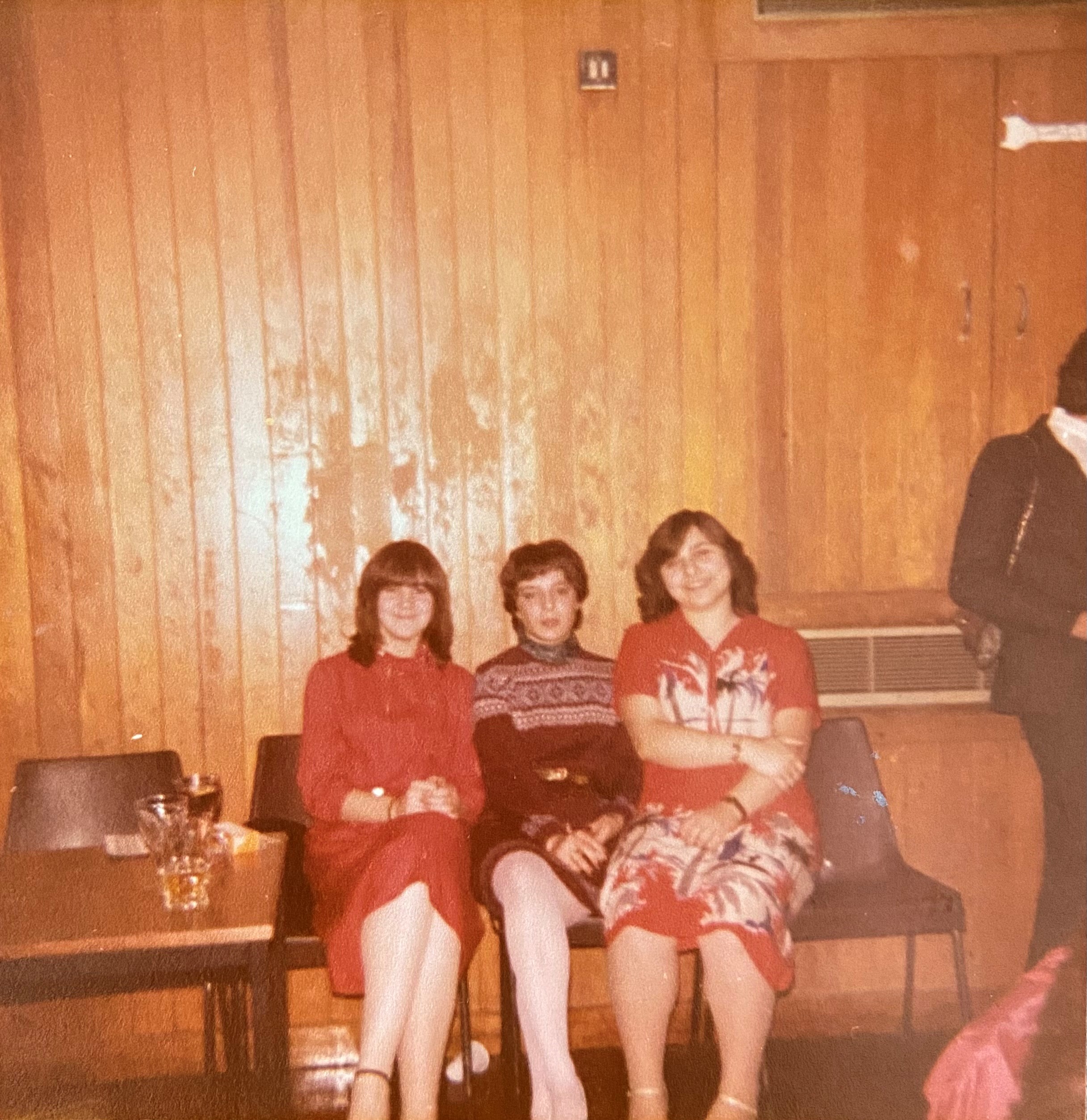
Italians socialising and dancing whilst at a dance in the 1960s.
During these gatherings, some families dressed in homage to their heritage. The variety of outfits highlighted the diversity of Reading’s Italian community.
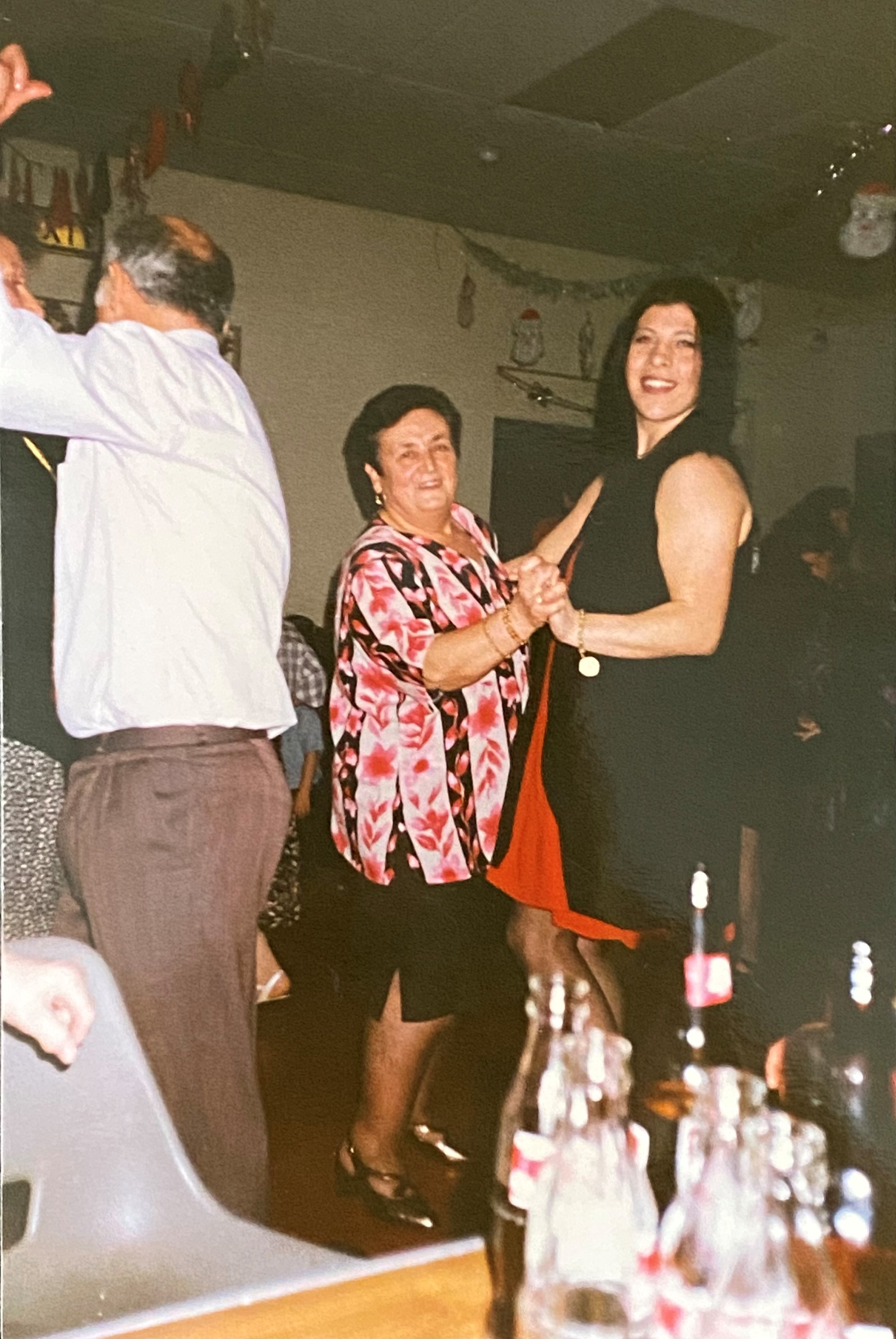
Three Italian dancers in the 1990s. Similar Italian dances were hosted and enjoyed by other Italian communities living in Basingstoke.
Memories of these dances differ amongst the community’s second-generation. One person, Paolo, enjoyed dressing up in his nonno’s (grandfather’s) farm hat and socialising with his Italian friends. While Teresa also loved these dances, she was very aware that her elders saw them as the opportunity for her to meet an Italian boy and start her own family. Evidently, reconstructing an Italian social life had its limitations with the younger generation, especially if most of their friends were British.
It was almost like I was a kid, going to a party, which happened to be with other Italians [...] I would meet up with other Italians’ kids at the party, my age, and just play [...] but I did not really engage with them afterwards.
- Ciriaco (second-generation Italian)
Card games and play
Aside from dancing, women would socialise, sharing their struggles of raising children in a traditional way in a foreign country, while men played the popular Neapolitan card game Scopa. This is an Italian card game, and one of the three major national card games in Italy alongside Briscola and Tresette. In Italian, Scopa means ‘broom’ or ‘sweep’. The object of the game is to sweep, or clean, the table of cards.
Below, watch a game of Scopa being played, and learn how to play it for yourself!
The Azzurri: Reading's Italian football team
For Reading’s younger male Italians, there was also the Azzurri football team.
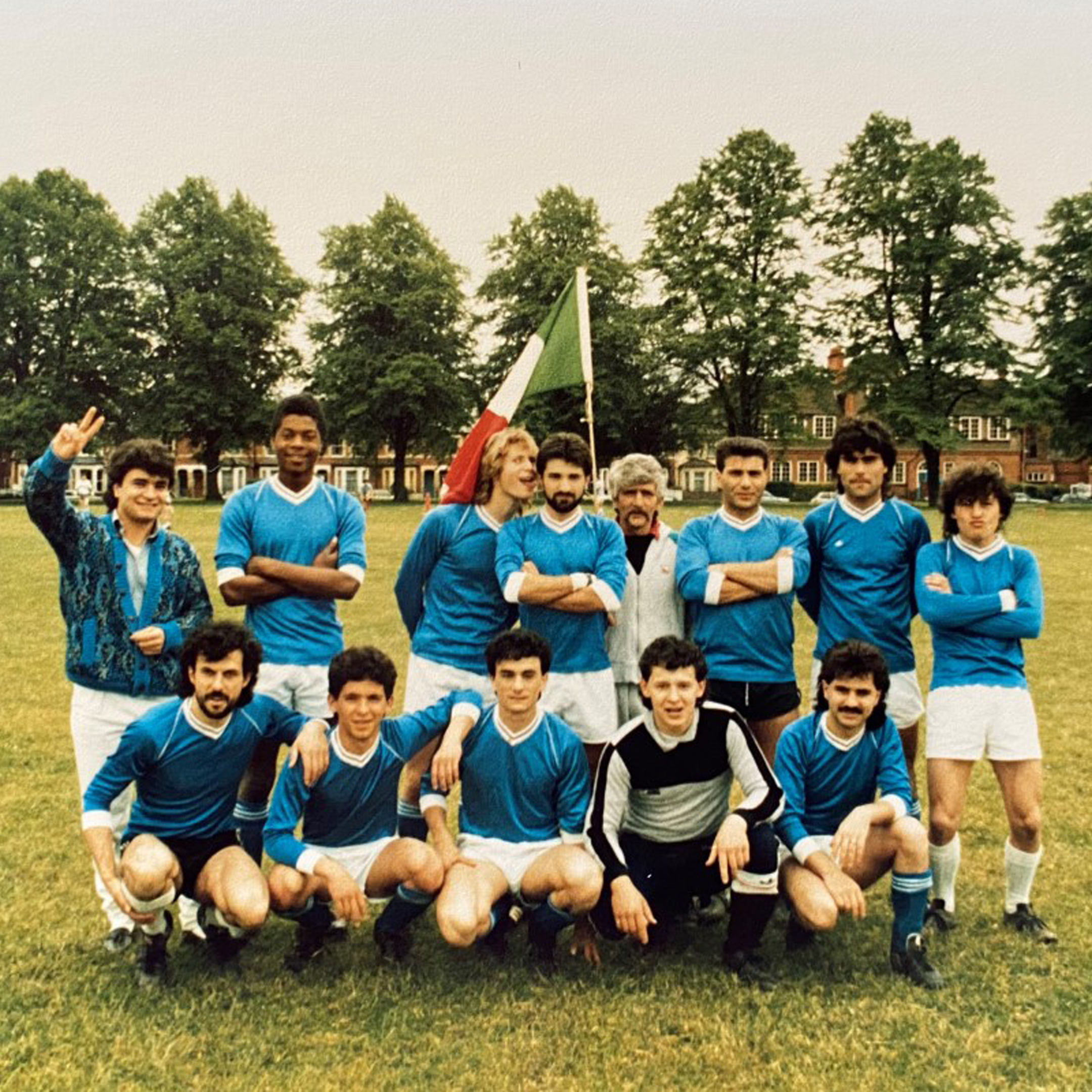
Azzurri, Reading's Italian football team.
Taking its name from the Italian national team, they played in the South Bucks football league. While most players were Italian, anyone was welcome. They trained every Sunday at Palmer Park and played against local teams and other Italian football teams in Bedford and Milton Keynes. When Rocco came to Reading for work at just 15 years of age, the Azzurri allowed him to reclaim his youth and maintain an important connection with his home. Ciriaco also loved being involved with the Azzurri. While he did not play within the team, he watched many of their practises and league matches.
This love of Italian football was felt across Reading, especially in 1982 when Italy won the World Cup. Italians living in Reading and the town’s locals took to the streets to celebrate the win.
Youth culture
These younger Italians also enjoyed interacting with British youth culture. They often moved between British and Italian cultures and, unlike their parents, felt at home in both. During the 1970s and 1980s, nightclubs Top Rank and Target were popular with young Italians in Reading. They mixed with others within the local community, listening to rock and reggae music and dancing to songs from UB40 and Bad Manners.
I used to go to a rock festival every August. I like music and dancing.
- Rocco (first-generation Italian migrant)
With more disposable income and leisure time, some Italians travelled and went on typical ‘British’ holidays. Day trips to Bournemouth beach and Brighton Pier were popular with Italians who had never been to a beach before.
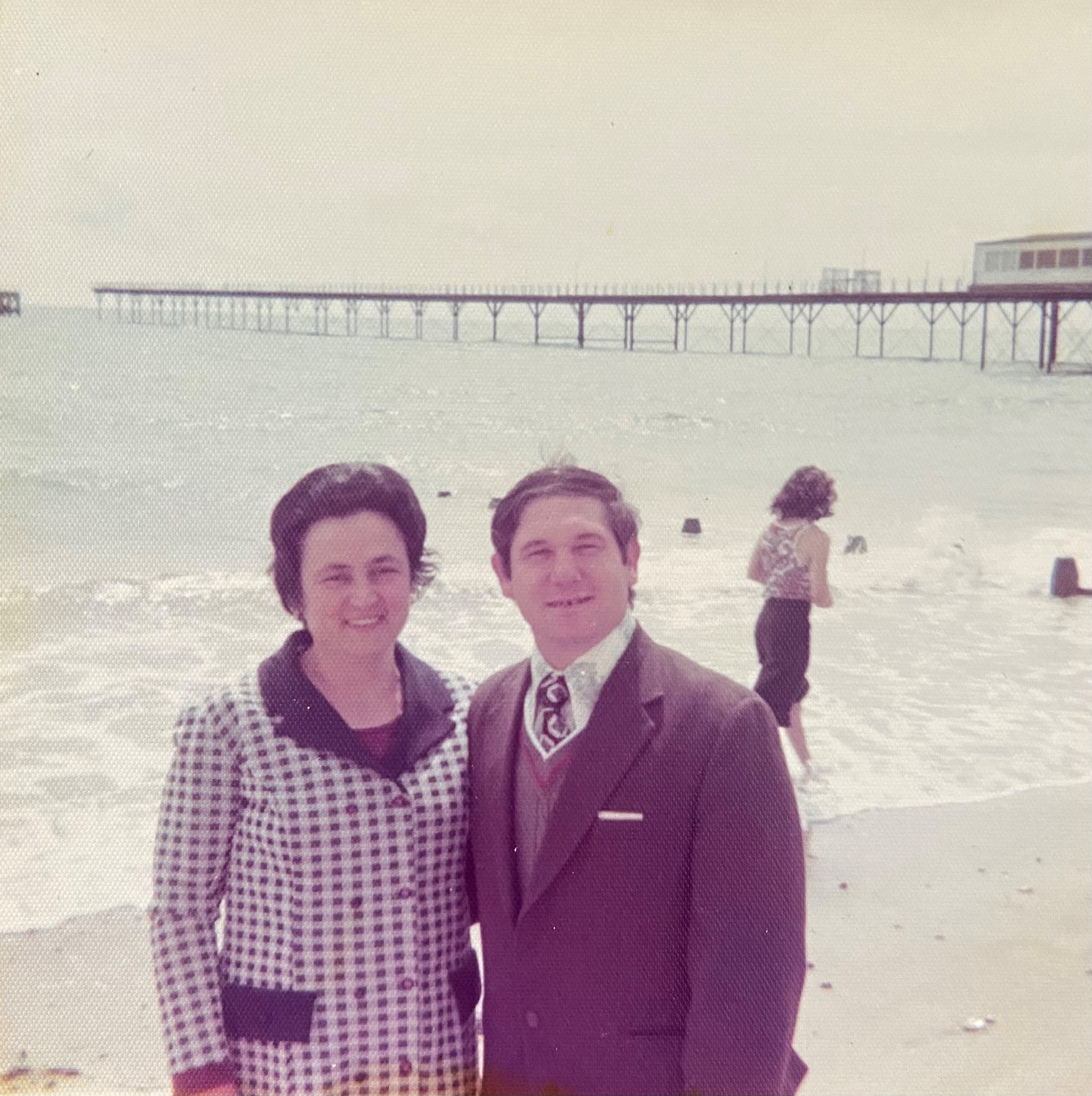
Sabatina and Sisto at Brighton Pier during the 1970s.
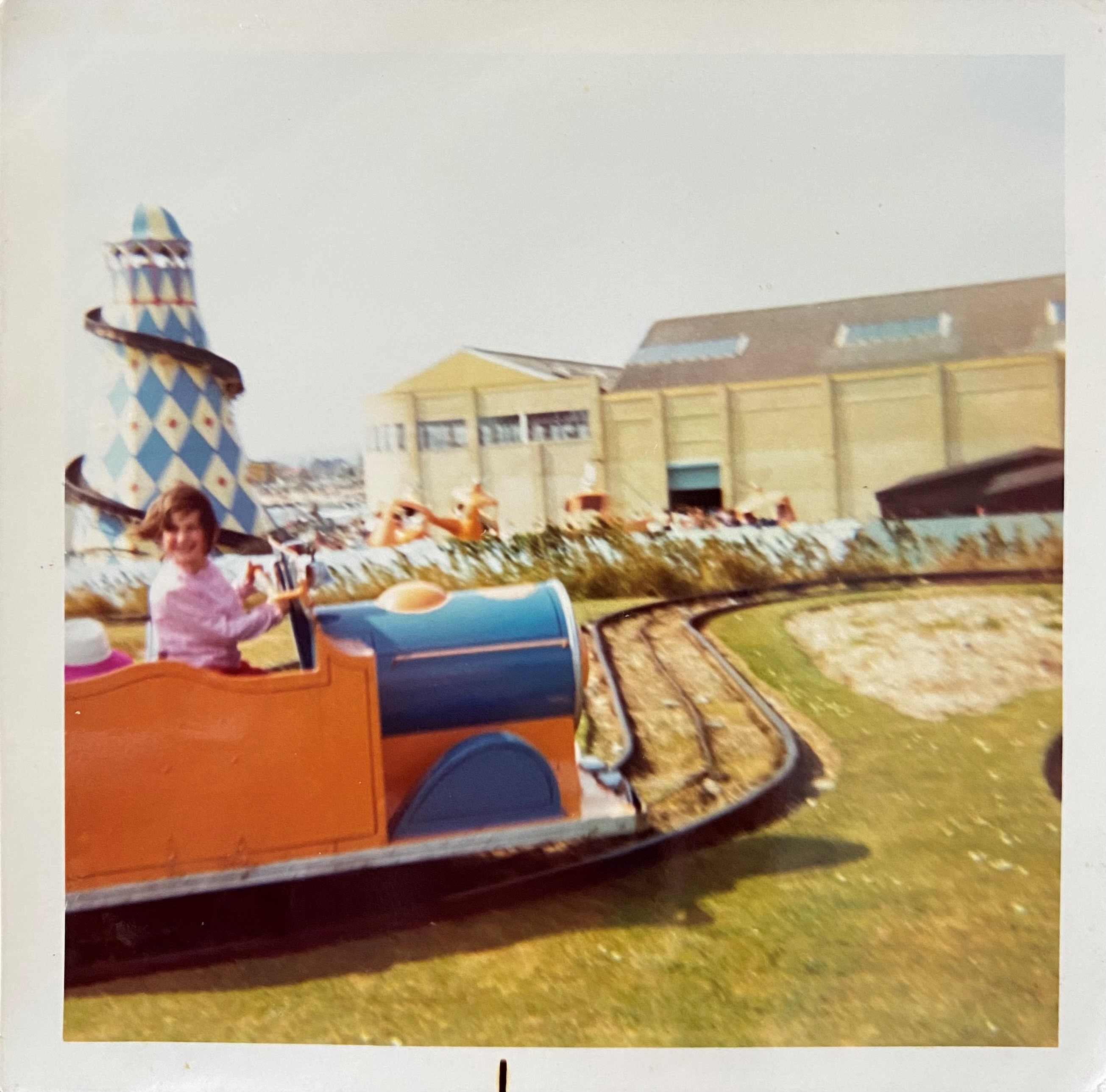
Mena enjoying the fairground rides on a family day out to Littlehampton.
Others enjoyed spending their disposable income on shopping days out to Reading town centre. It was on one of these days out that Angela met another Italian living in Reading. They are still friends 70 years later!
Becoming Italian in Reading
Most Italian migrants who arrived in Reading after the Second World War were from Southern Italy. They left as Southerners and learned how to be Italian in Reading. Yet, their Italian community did not exist in a void. Their different social gatherings and leisure pursuits exposed them and their families to British culture whilst retaining strong connections with their homeland. Paradoxically then, these leisure pursuits allowed migrants to ‘become’ Italians in Reading while slowly ‘becoming’ English, too. Their identity was neither purely Italian nor superficially British. Rather, they constructed a hybrid cultural identity which they defined through their own means as they adjusted to living in Reading.





